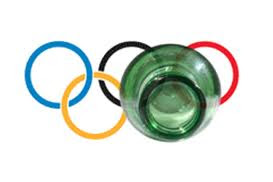 |
| In our galaxy, the brewpub started here |
Why was the brewpub a crucial cog in the spinning wheel of craft beer? I once held the view that the 21-34 demographic made craft beer a success here in the early days. My logic: They drink a lot of beer and they got interested in craft beer. Fine. Unfortunately, wrong. The craft beer movement did not grow into something formidable simply because young adults drink more beer than their parents. Nope.
 |
| Not in Portland, but there's no food here |
From a business standpoint, the brewpub helped craft brewers build their business. It provided a place where people could go to eat a reasonable lunch or dinner and have a quality beer. Most owners will tell you their gross revenue leans in favor of food. The owner of my "home" pub recently told me his revenue is 60-40 food to beer. I suspect that's pretty standard. Of course, there's more profit in beer than in food, so you have to be careful about these numbers.
My point is this: A lot of people come to brewpubs because they are essentially restaurants where you can get good beer. The genius of the brewpub is that it dramatically expanded the available demographic of craft beer consumers. The founders of the craft beer industry in Oregon knew what they were doing when they lobbied to make brewpubs legal. People of all ages came in for the food. The beer flowed...making money for the business in the process. A perfect match.
 |
| A tasting flight at The Commons |
I can't help but wonder how this is going to work out. There's growing competition for shelf space in stores and tap space in pubs. Remember, these breweries typically have limited tasting room hours. If you want to try their their beers at the brewery, you better check the calendar and plan ahead. It's hard to imagine all of the players in this sandbox succeeding, even with the ongoing growth of craft beer as a sail.
 |
| Sprints (right) launched the specialty sales model |
The brewpub model is the foundation of craft beer revolution in Portland and beyond. Is it possible that we've moved on? Are these production/specialty breweries the next step in the evolution? Only time will tell. My guess is not everyone trying this is going to be able to pull it off. We shall see.




























